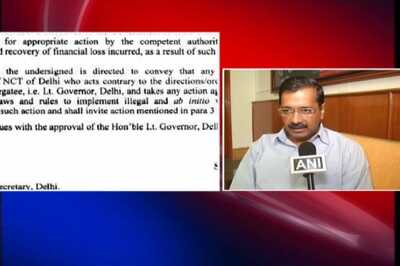
views
THIRUVANANTHAPURAM: Last week, the Labour Department issued a show cause notice to three major construction houses in the city, asking all work to be stopped on the sites with immediate effect.The episode is hardly consolatory, considering the frequency of accidents on construction sites. A wider awareness regarding safety measures among the common citizens could play a key role in reigning in the proliferation of skyscrapers that go up on shaky foundations.K Muraleedharan Pillai, an electrical engineer who specialised in Industrial Safety, has sought to do his bit in furthering public awareness in this regard with his one-of-a-kind ‘Construction Safety Handbook.’Pillai has over 15 years’ experience of working in countries like UAE and Qatar, where stringent safety standards are adhered to in construction projects. His desire to prepare a handbook on the subject that is easily understood by common people while also serving as a reference to safety personnel translated into a comprehensive study, first published in 2007 and currently selling its third edition.“In the Gulf countries, where I have worked, safety measures are implemented in accordance with the UK and the US standards. It was as late as 1996 when the Building and Other Construction Workers (Regulation of Employment and working Conditions) Act was implemented by the Government of India. My book covers both the foreign standards which can be emulated in our country as well those laid down under the 1996 Act,” says Pillai, who has written on construction safety in publications including ‘Industrial Safety Chronicle’ published by National Safety Council.The book covers aspects regarding safety at workplace; safe use of electricity, equipment, vehicles and machinery; accident reporting, investigation and analysis. The book also has a series of appendices featuring site organisation charts, inspection and audit checklist, fire inspection checklist and other related forms and proformas.“Most of the accidents on sites are related to work at heights, excavations and electrical work,” says Pillai. In the case of electrical work, temporary connections, often shabbily drawn and exposed to rain and other damages, can spark off lethal hazards. “Risk assessment, a major per-construction formality, is not carried out in most cases. It is an important way to foresee hazards and ensure damage control measures,” he says.With construction spree in top gear, Pillai’s expertise in the field may be put to use by builders and government authorities in the wake of frequent accidents. Meanwhile, those who wish to have a safe roof over their heads have the handbook to guide them. Builders can also go by the book so that wobbly structures do not rob precious lives.



















Comments
0 comment